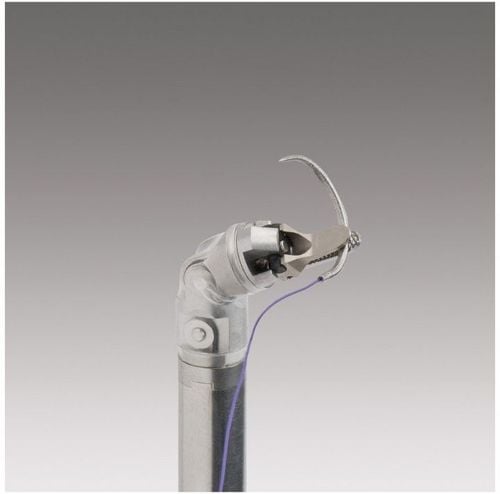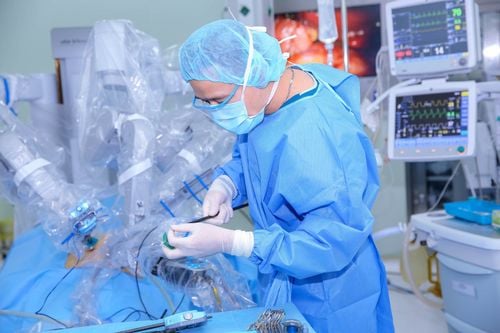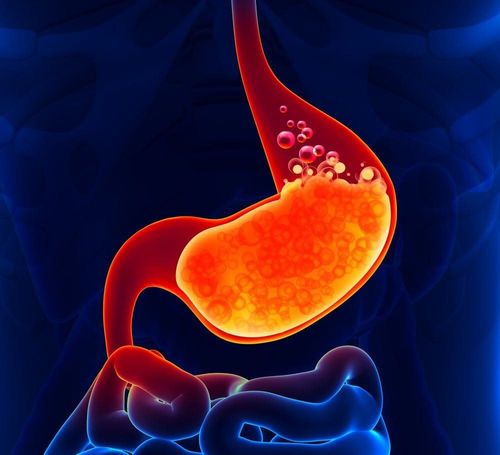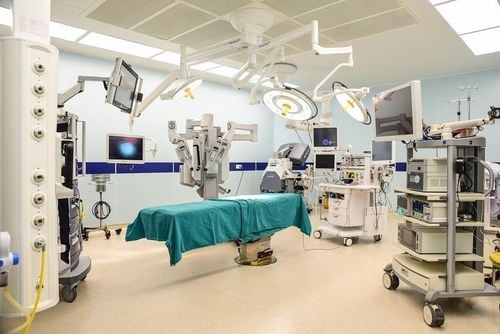This is an automatically translated article.
The article is professionally consulted by Master, Doctor Duong Xuan Loc - Gastroenterologist - General Surgery Department - Vinmec Danang International General Hospital1. Diaphragmatic hernia can occur in both adults and children
The diaphragm is a muscular, domed structure that forms a septum, separating the thoracic cavity from the abdominal cavity. The completion of the diaphragmatic septum occurs by the 8th week of pregnancy. During the development of the peritoneal - pleural folds from the fetal period, errors will create defects on the diaphragm. This defect opens the thoracic cavity to the abdominal cavity, most commonly in the posterior, left side.A diaphragmatic hernia is a protrusion of the upper part of the stomach through the diaphragm, the dome-shaped muscle that separates the thoracic and abdominal cavities. This means that part of the stomach is abnormally protruding into the thoracic cavity.
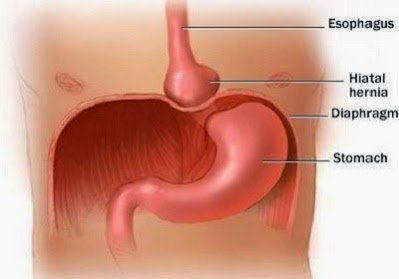
Diaphragm hernia in adults is usually esophageal hiatus hernia. The diaphragm has three major openings and minor openings to allow passage of the esophagus, aorta, and superior vena cava. Esophageal hiatal hernia is a hernia of the stomach through the esophageal cleft. One of the most common manifestations of esophageal hiatus hernia is the reflux of gastric juice from the stomach into the esophagus. This reflux is related to a number of factors, including lower esophageal sphincter activity.
Most cases are mild and largely asymptomatic, in severe cases diaphragmatic hernia can cause discomfort and pain, which can lead to reflux. Reflux is a condition in which stomach acid rises and backs up into the esophagus, leading to other complications in the stomach and throat.
Anyone of any age is at risk for a diaphragmatic hernia. However, people over the age of 50 and overweight women are more susceptible to diaphragmatic hernia.

2. Treatment and recovery after endoscopic diaphragmatic hernia
Diaphragmatic hernia is treated by surgery with the aim of bringing the herniated viscera back to its original position, stitching to restore the diaphragmatic esophageal hole. Surgical treatment of diaphragmatic hernia by open surgery or laparoscopic surgery. Laparoscopic surgery method helps patients recover faster, high aesthetics due to leaving small scars.The disease usually has good progress after surgery. Recovery after laparoscopic surgery for diaphragmatic hernia treatment includes:
After surgery, the patient is transferred to the recovery department. Keep warm, lie with your head high, support breathing. Continue intravenous antibiotics for 7-10 days. Enteral fasting, complete intravenous feeding for 2-3 days, then oral or nasogastric feeding. Check blood gas 1 hour after surgery, and chest X-ray 6 hours after surgery. Treatment of pulmonary hypertension, gastroesophageal reflux disease if present. Take care of the wound every day and remove the sutures after 7 days. Patients should note to adhere to a number of things in their living habits to be able to control diaphragmatic hernia such as:
Lose weight if you are overweight. Eat slowly: eat 4-5 small meals instead of 1-2 large meals. Avoid foods that cause heartburn such as: chocolate, spicy foods, foods made with potatoes, onions, citrus fruits, tangerines ...

Robotic surgery with hand-held robots is a method that has many advantages compared to classical laparoscopic surgery and robotic surgery with:
Instruments with flexible operating heads such as: wrist joints help access narrow angles, increase dissection and cause less damage to adjacent areas compared with classical arthroscopic surgery; Automated endoscopes via voice, laser, eye tracking, ... help doctors actively control and have better vision and control, increasing accuracy and safety in performing surgery ; With the advantages of compactness, robotic arm surgery is less invasive and has many advantages such as small incisions, less pain, low risk of infection, thereby helping customers to lose less blood during surgery and recover quickly; The cost is much lower than robotic surgery.
Please dial HOTLINE for more information or register for an appointment HERE. Download MyVinmec app to make appointments faster and to manage your bookings easily.





